constituent assembly of india debates (proceedings)- volume vii
constituent assembly of india debates (proceedings)- volume vii
constituent assembly of india debates (proceedings)- volume vii
Create successful ePaper yourself
Turn your PDF publications into a flip-book with our unique Google optimized e-Paper software.
or carrying on business without the approval <strong>of</strong> the district-<strong>of</strong>ficer. It is felt that even industries should<br />
not be started in the hill areas by non-tribals because that might mean exploitation <strong>of</strong> the people and the<br />
land by the non-tribals. In addition to these main points there is the question <strong>of</strong> preserving their ways <strong>of</strong><br />
life and language, and method <strong>of</strong> cultivation etc. Opinions are expressed that there could be adequate<br />
protection in these matters only by transferring the government <strong>of</strong> the area entirely into the hands <strong>of</strong> the<br />
hill people themselves.<br />
(c) In the making suitable financial provisions it is feared that unless suitable provisions are made or<br />
powers are conferred upon the local councils themselves, the provincial government may not, due to the<br />
pressure <strong>of</strong> the plains people, set apart adequate funds for the development <strong>of</strong> the tribal areas. In this<br />
connection we invite a reference to the views expressed in the Assam Government's Factual<br />
Memorandum on p. 67 <strong>of</strong> Constituent Assembly Pamphlet Excluded and Partially Excluded Areas - I.<br />
7. PROVISIONS OF 1935 ACT -<br />
The provisions <strong>of</strong> the Government <strong>of</strong> India Act are based on the principle that legislation which is<br />
passed by the Provincial Legislature is <strong>of</strong>ten likely to be unsuitable for application to the Hill Districts. The<br />
mechanism provided for "filtering" the legislation is therefore to empower the Governor <strong>of</strong> the Province<br />
to apply or not to apply such legislation. The full implications <strong>of</strong> the provisions <strong>of</strong> the Government <strong>of</strong><br />
India Act are discussed in the Constituent Assembly pamphlets on "Excluded and Partially Excluded<br />
Areas" Parts I and II, and it is perhaps not necessary to discuss them exhaustively here. The main<br />
features <strong>of</strong> the provisions are that certain areas have been scheduled as excluded or partially excluded;<br />
it is possible for areas to be transferred from the category <strong>of</strong> excluded to the category <strong>of</strong> partially<br />
excluded by an Order-in-Council and, similarly, from the category <strong>of</strong> partially excluded to the category <strong>of</strong><br />
non-excluded; legislation will not apply automatically to any such scheduled area even if it is a partially<br />
excluded area, but will have to be notified by the Governor who, if he applies them at all, can make<br />
alterations. The revenues for excluded areas are charged to the revenues <strong>of</strong> the Province and special<br />
regulations, which do not apply to the rest <strong>of</strong> the Province, may be made by the Governor in his<br />
discretion for excluded and partially excluded areas.<br />
8. FUTURE POLICY -<br />
The continuance or otherwise <strong>of</strong> exclusion cannot be considered solely from the point <strong>of</strong> view <strong>of</strong> the<br />
general advancement <strong>of</strong> an area. If that were so, all that would be necessary in the case <strong>of</strong> areas like the<br />
Lushai Hills which are considered sufficiently advanced would be to remove the feature <strong>of</strong> exclusion or<br />
partial exclusion. such action may be suitable in the case <strong>of</strong> certain partially excluded areas in other<br />
parts <strong>of</strong> India. But in the Hills <strong>of</strong> Assam the fact that the hill people have not yet been assimilated with<br />
the people <strong>of</strong> the plains <strong>of</strong> Assam has to be taken into account though a great proportion <strong>of</strong> hill people<br />
now classed as plains tribals have gone a long way towards such assimilation. Assimilation has probably<br />
advanced least in the Naga Hills and in the Lushai Hills, and the policy <strong>of</strong> exclusion has <strong>of</strong> course tended<br />
to create a feeling <strong>of</strong> separateness.<br />
On the other hand, it is the advice <strong>of</strong> anthropologists (see Dr. Guha's evidence) that assimilation<br />
cannot take place by the sudden breaking up <strong>of</strong> tribal institutions and what is required is evolution or<br />
growth on the old foundations. This means that the evolution should come as far as possible from the<br />
tribe itself but it is equally clear that contact with outside influences is necessary though not in a<br />
compelling way. The distinct features <strong>of</strong> their way <strong>of</strong> life have at any rate to be taken into account. Some<br />
<strong>of</strong> the tribal systems such as the system <strong>of</strong> the tribal council for the decision <strong>of</strong> disputes afford by far the<br />
simplest and the best way <strong>of</strong> dispensation <strong>of</strong> justice for the rural areas without the costly system <strong>of</strong><br />
courts and codified laws. Until there is a change in the way <strong>of</strong> life brought about by the hill people<br />
themselves, it would not be desirable to permit any different system to be imposed from outside. The<br />
future <strong>of</strong> these hills now does not seem to lie in absorption in the hill people will become


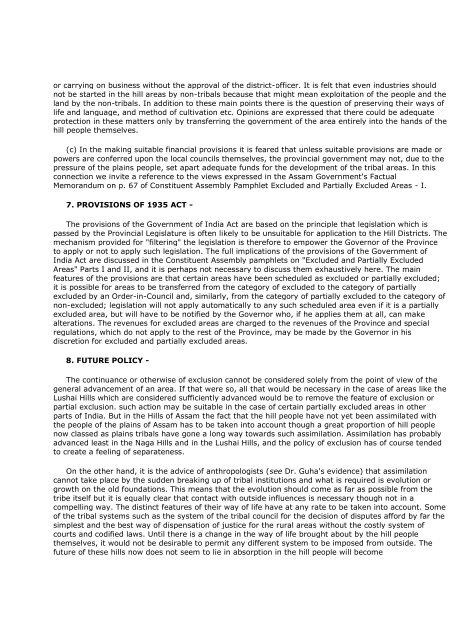
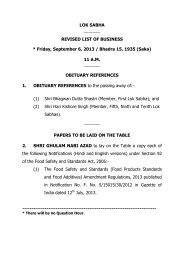
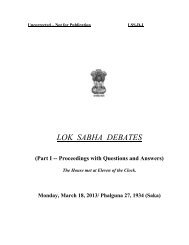

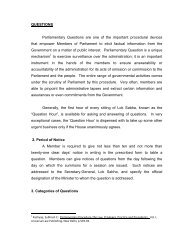
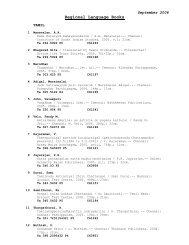

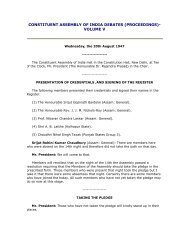
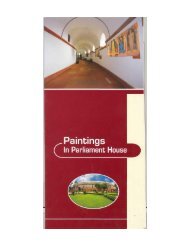
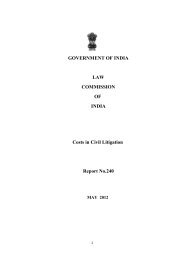
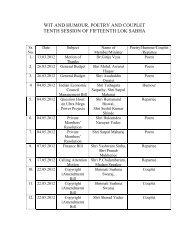
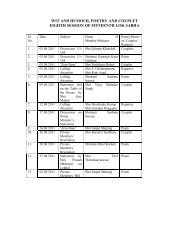

![gÉÉŌ A.]ÉŌ. xÉÉxÉÉ](https://img.yumpu.com/8015720/1/190x245/geeo-aeo-xeexee.jpg?quality=85)
